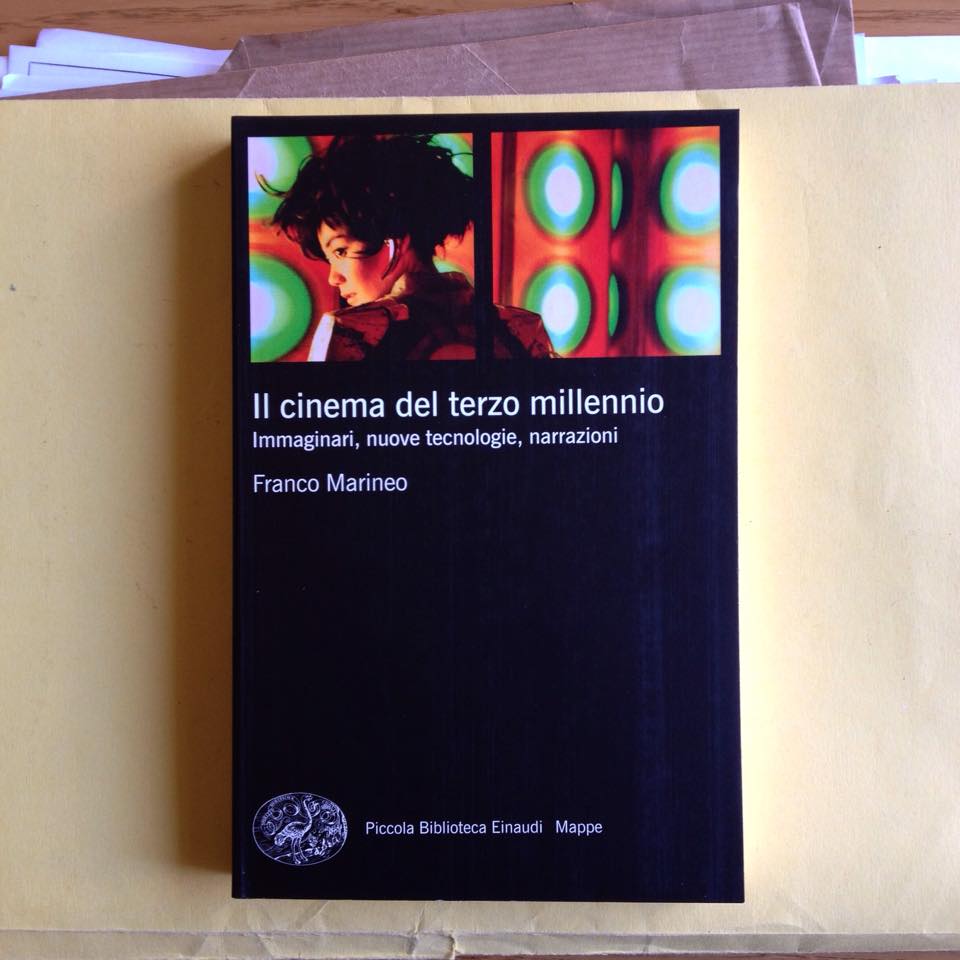Einaudi, Torino, 2014.
Jeremy Bentham was probably right when he conceptualized the Panopticon, an ideal jail where the control system was invisible both for the controller and the controlled. The idea of the third millennium cinema could be synthetized in this half-totalitarian project form (and it’s probably so not only for the cinema but for the audiovisual works at-large): Franco Marineo faces the matter starting from the end of the 90’s, when the narration finds its climax and its iceberg collision with reality: Jurassic Park concretely defines the immersion of reality in technology (and viceversa), through the real possibility to bring dinosaurs back to life thanks to the use of biotechnology and the use of a suffocating control of location (by cages and fences) and also by a control of reproduction. The control obsession points out an ancestral fear about a lost nature that cannot come in touch with humans; but it’s with Fight Club that we see an absolutely unexpected progression: the final skyscraper’s explosion seems the prequel of the long lasting and catastrophic 11th September 2001 film.
Starting from the above-mentioned movies, Marineo analyzes the transformations of the narration and of its subjects, which strictly reflect the historical, physical and psychological consequences of an event that literally became cinema. Visually attending to the World Trade Center’s collapse determined an irreparable shifting of the spectacular gaze’s center: powerless, we looked at reality in its immediate ongoing, the images didn’t even pass through the camera, sublimating the idea of getting closer which was born from Spielberg’s dinosaurs. This idea became a need and a necessity, since then, especially thanks to the new serial works (first of all: Lost) which have condensed, included and involved each spectator in the narration by a convergence of media and various technological supplies (Internet, videogames), which made possible to enter inside narration and its developing. And so, the crisis: the convergence swallows up cinema and television, the aesthetics is contaminated, borders are broken (exactly as the T-Rex fence), the subject’s fragmentation and the complexity of narration’s lines can’t be hold no more by cinema and so they flow into serial.
Also the axiom of time is twisted: narrative choices give the linearity up (flashbacks and flash forwards become essentially narrative, moment of revelation or rebuilding of the story itself), new ways of fruition are more and more fragmentary and fragmented (the use of various kind of vision devices as pc or tv on demand don’t admit a spectator control anymore); Marineo point out how the relation between audience and screen went beyond what Jullier defined «essentially physical and sensorial excited»: it’s not only a kind of excitement, there’s a new kind of straight aggressiveness that brings the spectator deeply inside the show, not just immersed but implicated, not only by sensorial inputs but also by conceptual inputs.
Therefore, this travel in the third millennium assumes an interconnection between imaginaries, narrations and technologies, which intersects and merges in a complex, unsettled and individualized unicuum; in the last chapter, 70 fotogrammi¹, the author presents seventy examples of cinema narrative transpositions trying to get out the current magma of cinema, which is now articulated, ripped open and multi-faceted as never before.
Vera Viselli
¹ 70 frames, tr.








